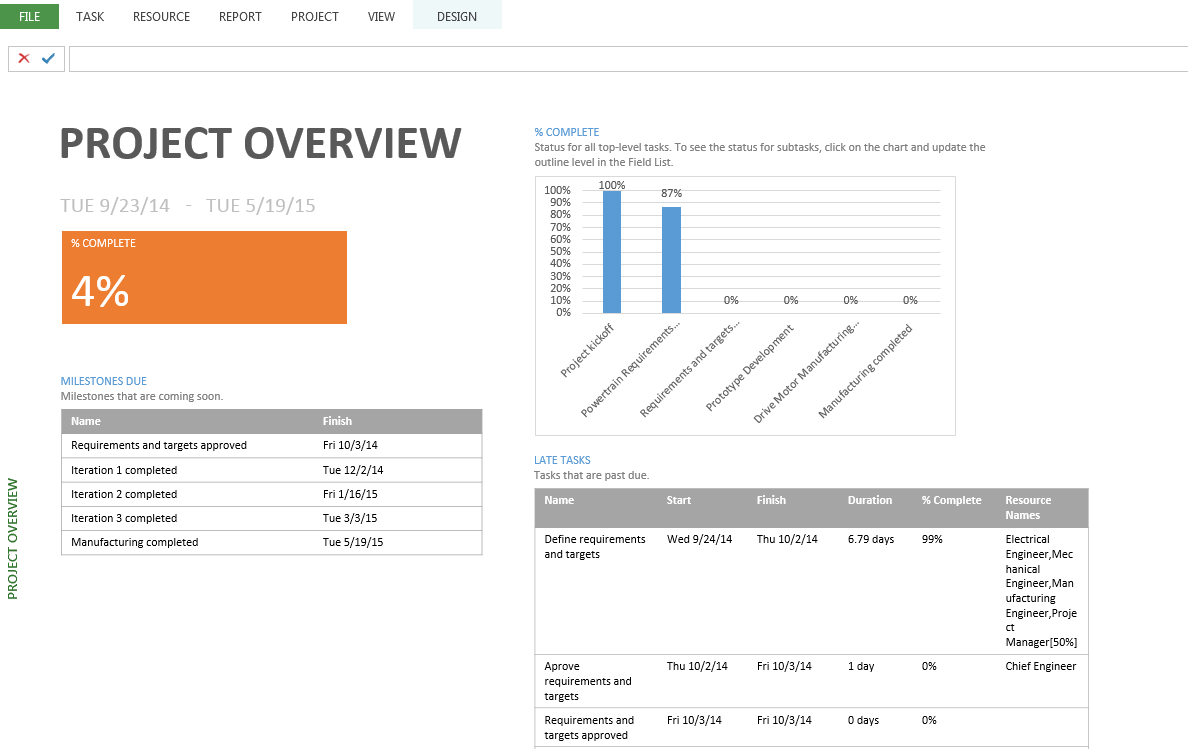How many times have you heard the saying: “garbage in is garbage out”? When wanting to benefit from the capabilities a project scheduling tool can bring, this clever phrase defiantely applies. Take for instance, the enhanced reporting features of Microsoft Project 2013. It now offers a powerful, graphical reporting platform (as opposed to the black and white columned wall of text built-in reports available in previous versions) that you can easily customize to create your own dashboard and then copy to other Microsoft Office applications, save to PDF or print, in order to share as you please.
There are in fact 21 built-in fully customizable graphical reports in Microsoft Project 2013 ranging from Project Overview, to Burndown to Cost Overruns reports, etc… But as you may imagine, to be able to benefit from any of these built-in capabilities, say for example, the Project Overview Report, which as you can see below in Figure 1, displays what percentage of your project is complete, what tasks are late and which are your upcoming milestones; you would have to make sure that your project data is not only up to date but that it is accurate and was correctly entered from the outset. This means, making sure that the work required to produce the deliverable was correctly broken down into tasks and that these were correctly entered, sequenced and prioritized.
Only when all the data you enter into a project scheduling tool such as Microsoft Project is relevant, accurate and up to date, you can count on benefitting not only from its durations and work effort projections (indeed, two of the main differentiators from its largest competitor: Microsoft’s Excel,) but also from the useful reporting built-in capabilities it now provides.
 Figure 1.
Figure 1.
Want to learn more about how to effectively use Microsoft Project, Microsoft Project Server, or Project Online to manage your projects effectively and to fully leverage the benefits these PPM tools can bring to your organization? Consider enrolling in one of our upcoming open enrollment training classes.
You can take our training classes “in person” in our EPMA training center in Houston, Texas or “live-virtual” over the Internet. And don’t forget to follow us on Twitter, LinkedIn, and Facebook.

